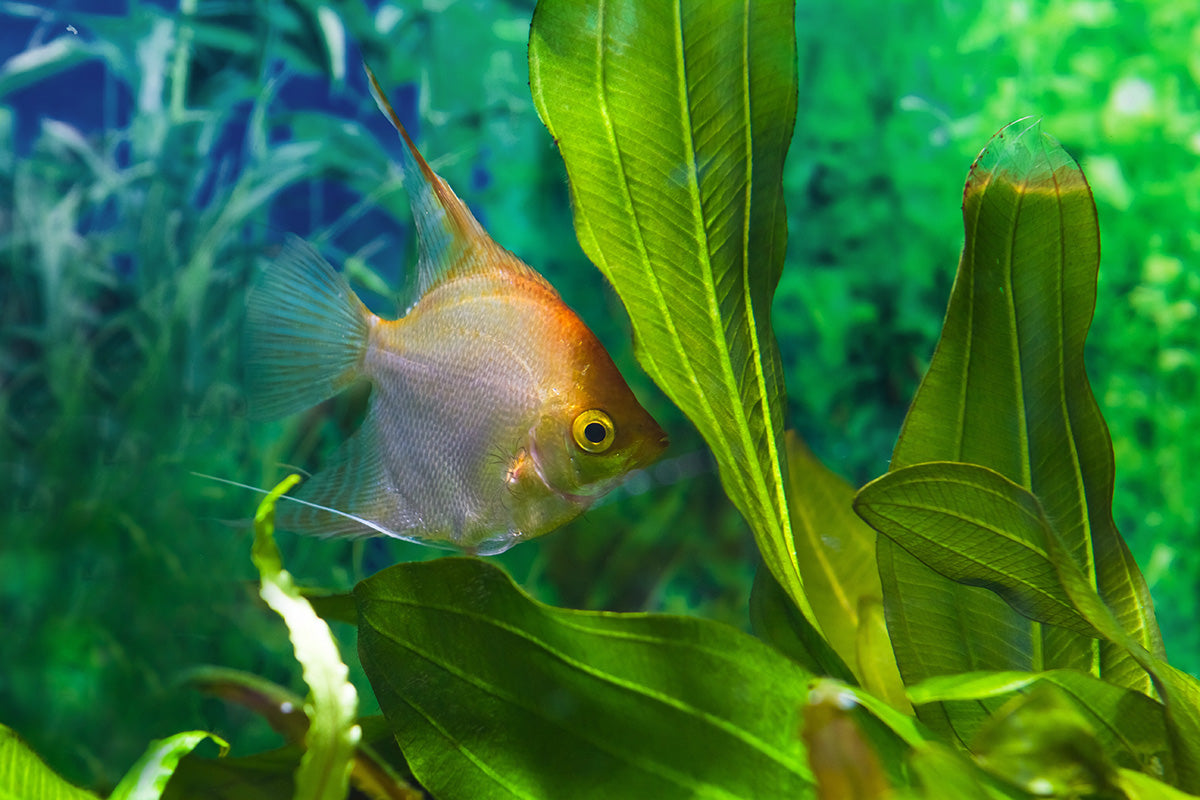Choosing the right fish and aquatic plants for your aquarium is essential for creating a thriving and happy aquatic environment. Each species of plant and fish have specific needs and characteristics so ask a Petland pet counselor can help guide you in making the best choices for your setup. Each store has a changing variety of live plants to choose from so you'll have to come into our store to see the selection we offer.
For beginners looking to add live plants to their aquarium, there are several easy-to-care-for options that can create a beautiful and vibrant underwater landscape. These plants are hardy, adaptable, and can thrive in a variety of tank setups.
The best time to introduce live plants into an aquarium is ideally before the tank is fully cycled. Cycling refers to the process of establishing beneficial bacteria in the aquarium that help break down toxic ammonia and nitrite into less harmful nitrate. This process can take several weeks, depending on the method used (fishless cycling or fish-in cycling). Introducing live plants before the cycling process is complete provides several benefits:
- Reduced Ammonia and Nitrate Spikes: Live plants absorb ammonia, nitrite, and nitrate from the water as part of their natural nutrient uptake process. By adding plants after cycling, you can help stabilize water parameters and prevent drastic fluctuations.
- Faster Growth and Adaptation: With established water parameters and a stable environment, live plants can adapt more quickly to the aquarium conditions. This allows them to grow faster and establish themselves better in the tank.
- Algae Prevention: Live plants compete with algae for nutrients, light, and carbon dioxide. By adding plants early on, you can help reduce the chances of excessive algae growth and maintain a more balanced ecosystem.
Want to try live plants in your aquarium? Here is a list of some great starter aquatic plants:
Anubias is a popular choice due to its resilience and slow growth. It can be attached to rocks or driftwood, making it effortless to maintain. Java Fern is another favorite, also suitable for attaching to hardscape materials. Both Anubias and Java Fern can tolerate a range of lighting conditions, from low to moderate.
Hygrophila polysperma, commonly known as Dwarf Hygrophila, is a popular aquatic plant in the aquarium hobby. Different colour variations are available. It originates from Southeast Asia and is widely cultivated for its ease of care and attractive appearance. This plant is known for its rapid growth rate, making it an excellent option for beginners looking to establish a lush and vibrant aquarium quickly. Its fast growth can help control algae by outcompeting it for nutrients. Hygrophila polysperma is best in the background or midground of your aquarium, as it can grow relatively tall. It can be used to create a dense and bushy background or as an accent plant when grouped with other species.
Water Wisteria is a fast-growing plant that not only adds visual appeal but also helps control algae by outcompeting it for nutrients. It adapts well to different water parameters and can be easily propagated.
Cryptocoryne plants come in various species and colors, offering plenty of options for aquascaping. They prefer moderate lighting and can add a touch of elegance to the tank.
Amazon Sword plants are a striking plant suitable for larger aquariums. It requires moderate lighting and nutrient-rich substrate for optimal growth. When provided with the right conditions, Amazon Swords can become a focal point in the tank.
When introducing live plants, talk to a Petland Pet Counsellor about:
- Proper L.E.D. lighting options.
- Which liquid or root fertilizers are best suited to support plant growth in your aquarium.
- The required regular maintenance such as pruning and removing decaying leaves to help maintain a healthy and thriving planted aquarium.
The additions of hardscape materials (rocks, driftwood and artificial decorations) and substrates (like aquatic soils, sand and different colors or grades of gravel) to enhance the beauty of your aquarium’s aquatic landscape.
Adding live plants not only enhances the looks of your aquarium but also contributes to the overall health of the aquarium, providing a more natural and enriching habitat for the fish and other inhabitants.

|
Paul Brissette has been with Petland for over 40 years and is an avid aquarium enthusiast. Paul has written articles for many aquarium magazines and has helped thousands of clients find joy in the fish hobby. |



